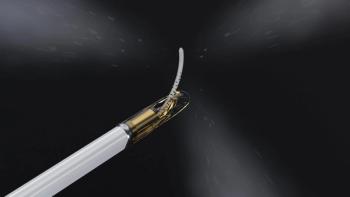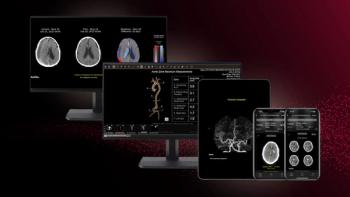
Q&A: Are nuclear medicine and molecular imaging synonymous?
Outgoing Society of Nuclear Medicine president Dr. Peter Conti proposed at the organization's 2006 meeting that nuclear medicine is synonymous with molecular imaging.
Outgoing Society of Nuclear Medicine president Dr. Peter Conti proposed at the organization's 2006 meeting that nuclear medicine is synonymous with molecular imaging. MIO queried Conti in September about his proposition and tested the idea on several of his colleagues at the Society for Molecular Imaging meeting in Hawaii in September. Here are their answers to the question, "To what extent is nuclear medicine synonymous with molecular imaging?"
Dr. Peter Conti, associate professor of biomedical engineering, the University of Southern California: The term nuclear medicine has been around for over 50 years. It represents a medical specialty. Molecular imaging is relatively new and does not represent a medical specialty per se, and it is more in tune with some of the new advances being made in the medical imaging field as a whole. It is a catch-all phrase that covers multiple modalities.
I don't think that molecular imaging is reserved for nuclear medicine, but I do think that nuclear medicine is part of this broader term.
Dr. Zaver Bhujwalla, professor of radiology and oncology, Johns Hopkins University: Nuclear medicine has a huge impact on molecular imaging, but other imaging modalities have a lot to contribute. A lot of it has to do with how you define molecular imaging. If you define it as looking at molecules, then all nuclear medicine applications include a molecular component, but you can't say that nuclear medicine is the only molecular imaging technique.
Dr. Sam Gambhir, director of molecular imaging, Stanford Medical Center: Nuclear medicine went a little astray four or five years ago when the leadership was actually thinking about changing the name of the SNM to the Society of Nuclear Medicine and Molecular Imaging. Instead of embracing all this stuff, they kept thinking that nuclear medicine and radioactive isotopes would continue to dominate, especially with translation to clinical use. So the real answer is that nuclear medicine is one way to do molecular imaging, but the field is much bigger than nuclear medicine alone.
Robert Gillies, Ph.D., professor of biochemistry and molecular biology, University of Arizona Health Science Center: In the minds of some people, nuclear medicine is synonymous with molecular imaging, but that doesn't make it a fact. This reminds me of a story attributed to Abraham Lincoln. He asked, "If you call a tail a leg, how many legs does a dog have? The answer is four. Just because you call it a leg, doesn't make it a leg."
We've seen plenty of examples at this meeting in which targeted molecular imaging is performed with other modalities. Clearly, optical imaging is often used in conjunction with nuclear medicine to monitor the fate of targeted labels. If you are looking at conversion of metabolites, MR spectroscopy probably does a better job than PET because you can see the precursor and also the product.
Many people who don't do nuclear medicine are concerned that the nuclear medicine field has tried to usurp the term molecular imaging. We are seeing, especially in the Society for Molecular Imaging, that each modality has an important application and that the fusion of modalities has tremendous potential.
Dr. Steven Larson, director of nuclear medicine, Memorial Sloan-Kettering Cancer Institute: Nuclear medicine is molecular imaging, but it is also targeted radiotherapy. Those are also molecular targets in a sense, and that's why you could say that nuclear medicine is molecular imaging. But there are other aspects of molecular imaging as well. Certainly, it is multimodality including optical, MRI, and perhaps CT.
So, the definition of molecular imaging that I use is broader than simply for radiotracers. It is really imaging the molecules and molecular-based events that underlie the fundamental biology of pathophysiologic or normal tissue process. With respect to cancer, this is just exploding because as we get new knowledge about the biology of cancer, more and more targets suggest themselves, such as the avb3 work that is going on with the F-18 galacto-RGD discussed at this meeting. That is just one example of a highly specific tracer.
Newsletter
Stay at the forefront of radiology with the Diagnostic Imaging newsletter, delivering the latest news, clinical insights, and imaging advancements for today’s radiologists.




























